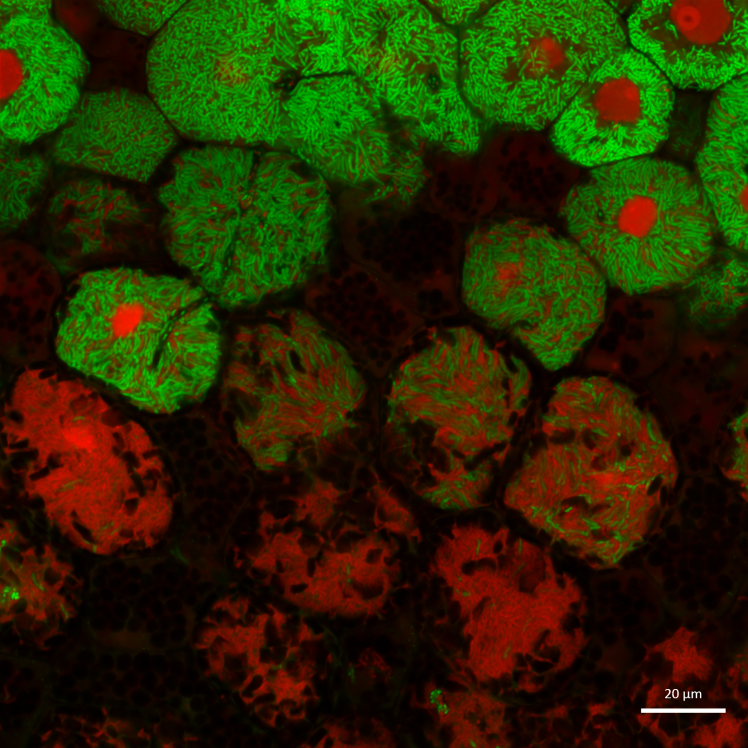Interconnection of defense and senescence in nodules
Insight into the control of nodule immunity and senescence during Medicago truncatula symbiosis
Legume plants are able to establish symbiosis with nitrogen-fixing soil bacteria, the rhizobia. This interaction leads to the formation of a new root organ, the nitrogen-fixing nodule. This symbiotic organ is massively and chronically infected by rhizobia without triggering an immune response. Senescence is a major process that optimises metabolism during symbiosis by recycling the constituents of non-functional nodule cells. The early induction of senescence or the activation of immune responses compromises the survival of the bacterial symbiont, leading to non-functional nodules.
A collaborative study between the IPS2 SYMUNITY team and the Amar Telidji University (Algeria) and the Research Unit of Medicinal Plants in Laghouat (Algeria), published in Plant Physiology, analysed the relationship between defence and senescence processes using M. truncatula mutants forming non-nitrogen fixing nodules. Simultaneous analyses of defence and senescence marker genes showed that these processes are antagonistic in non-nitrogen fixing nodules, but that wounding of a functional nodule leads to a simultaneous activation of defence and senescence. This work highlights the versatile relationship between immunity and senescence in nodules.

13/12/2022
